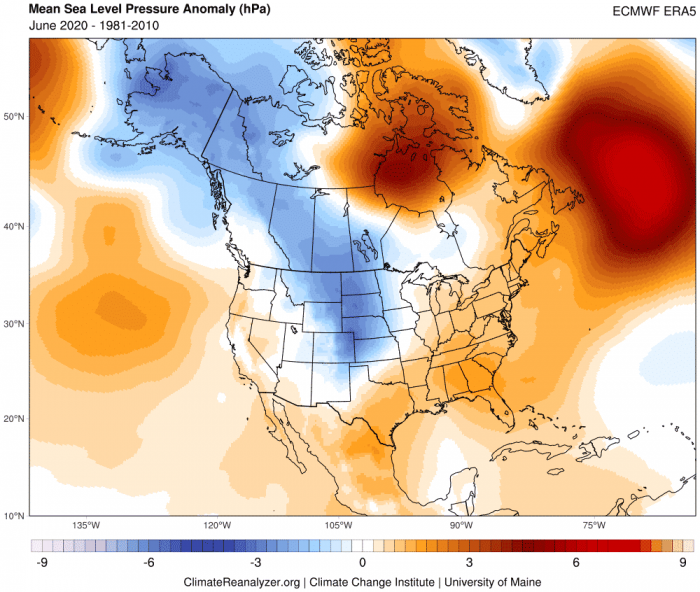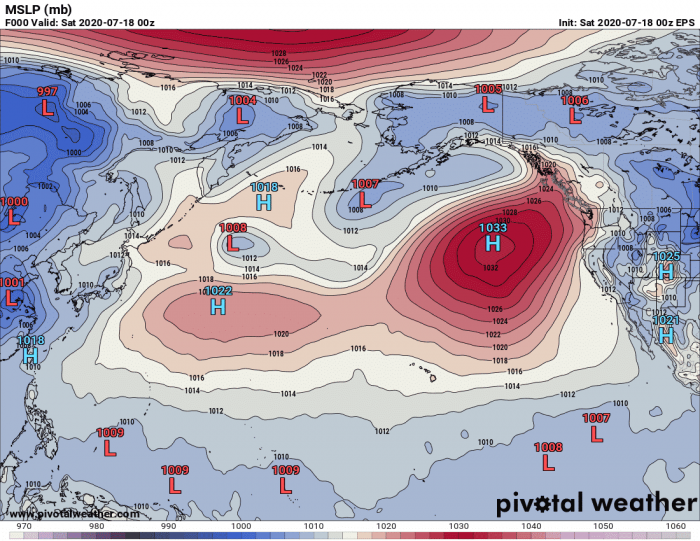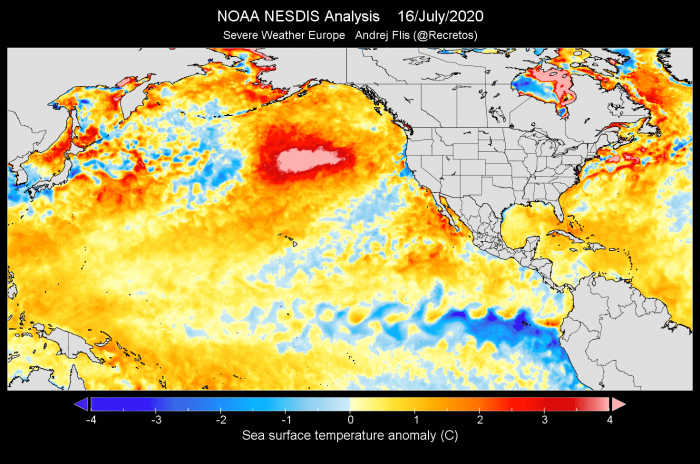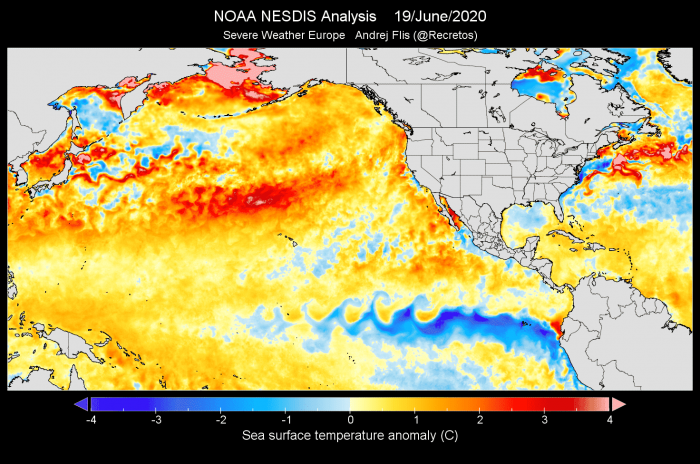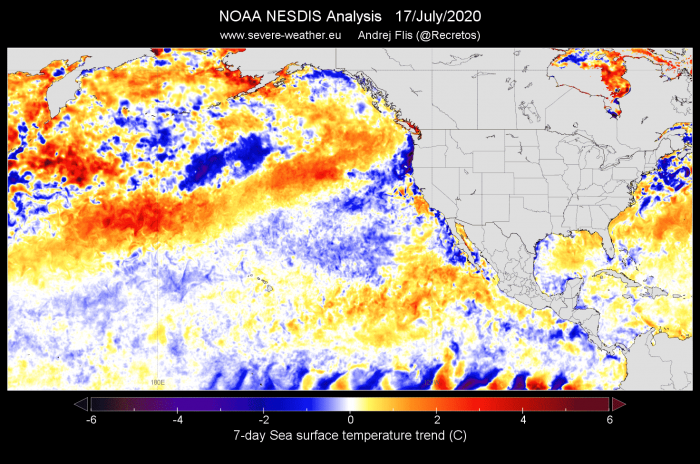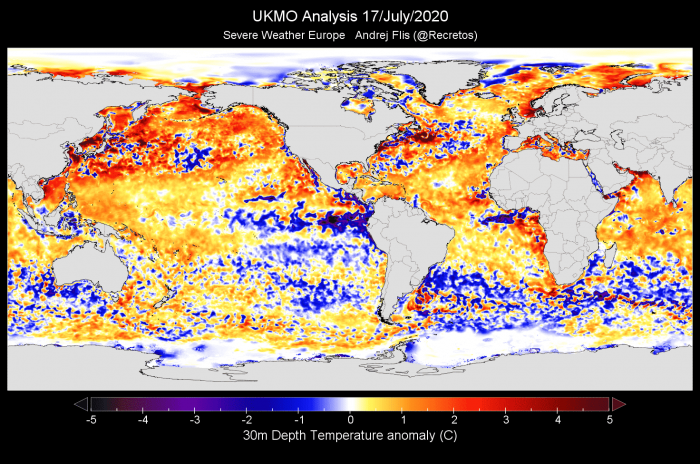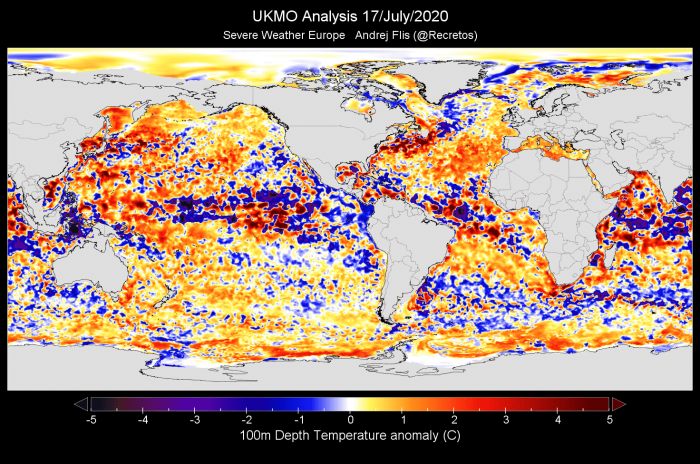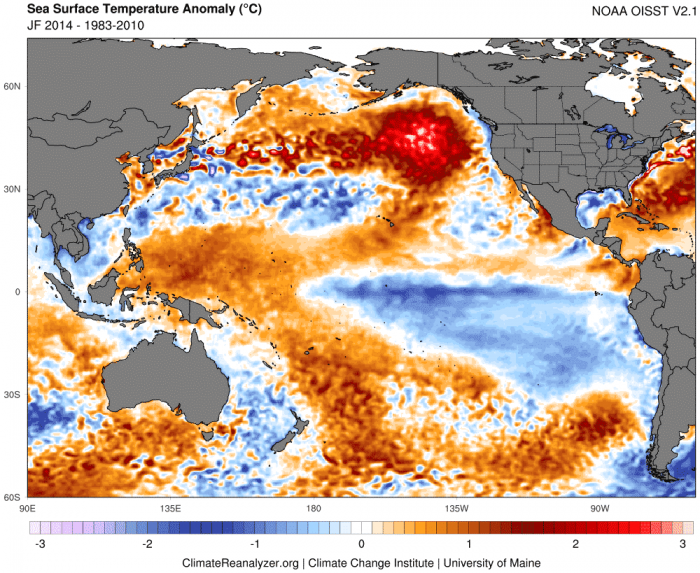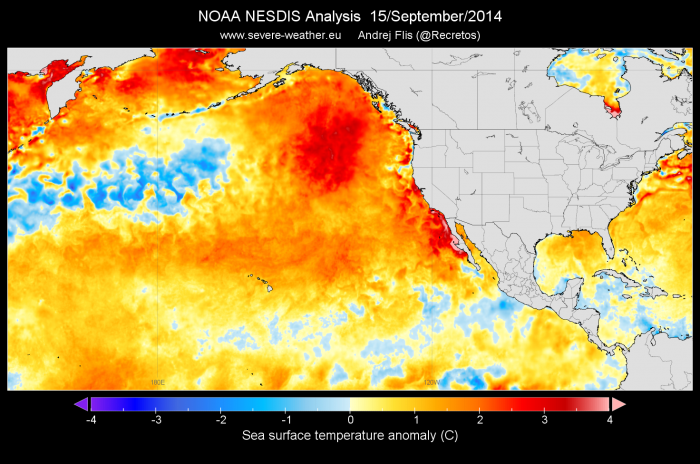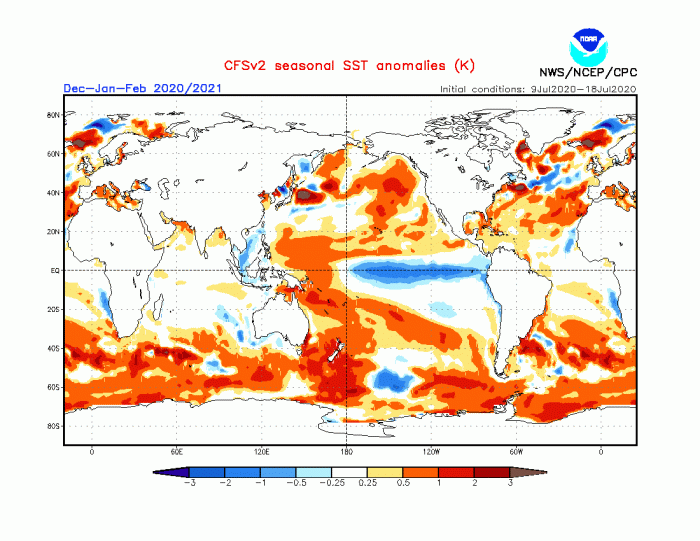Global oceans play a crucial role in weather and life across the entire world. The latest observations show a strong oceanic heatwave is developing in the Northeast Pacific ocean. Ocean heatwaves can have a major impact on marine life and the ecosystem and can also play a role in weather development.
A persistent, anomalous high-pressure system has been dominating the Northeast Pacific Ocean since June. The analysis from the ECMWF ERA-5 dataset shows the surface pressure anomalies around North America in June 2020. High-pressure systems are common in the Northeast Pacific during summer, but this year the pressure is higher than normal.
Check out our new article of newerly tropical system development in the Eastern Pacific:
Looking at current conditions, we can see a vast high-pressure system still dominating the northeast Pacific Ocean. It creates a stable, calm layer of weather over the Ocean it covers. As we will see, this has a very big influence on the temperature of the ocean.
The main effect of the high-pressure system is the lower than normal rate of heat loss from the sea to the atmosphere. That is due to the warmer air above the water surface and also because of the very calm weather. Weak winds mean weaker surface sea currents and less mixing of the ocean waters. The ocean gets colder the deeper you go. So low-pressure systems and strong winds create waves and rough seas, mixing the top warm layers with colder deeper ones, cooling the surface of the ocean.
The temperature analysis of the ocean surface temperature from NOAA, reveals an extension of warmer waters into the Northeast Pacific ocean region. This is directly in the area of the high-pressure system. The weather was calm, and the heat loss was suppressed, extending the warm waters towards the northeast, more than usual.
OCEANIC HEATWAVE
The temperature analysis above already indicates that there is a heatwave ongoing in the ocean, also called an “Oceanic heatwave”. The real extent of this marine heatwave can be seen if we look at the sea surface temperature anomalies. The latest data shows a very large extent of unusually warm ocean temperatures in the Northeast Pacific, exceeding 3°C above the normal levels over a large area.
The unusually warm waters were already developing since May. The latest oceanic heatwave was already starting to appear one month ago, seen on the temperature anomaly analysis below..
We produced a high-resolution video sequence, which visually shows the development and movement of the oceanic heatwave in the North Pacific, between May and July.
7-day temperature trends show the difference in ocean temperature since last week. The belt of ocean surface warming is extending on the edge of the high-pressure system.
The ocean heatwave in the Pacific is strong enough to also be seen on the 30-meter and 100-meter depth analysis. The deeper the warm anomalies go, the more persistent they are, and the longer they can last. But despite the overall warmer North Pacific, we do not see the same hotspot at depth as on the surface. That does indicate that the hotspot is more of a surface feature in the top 20-meters of the ocean.
HISTORY REPEATS
This is not the first ocean heatwave in the North Pacific. One of the strongest ones began in the winter of 2013/2014. The graphic shows the January-February 2014 ocean temperature anomaly. Warmer than normal waters were present closer to the coast, and also extended over a larger area. This was just the beginning, as the Northeast Pacific ocean remained warmer than normal throughout 2014. This oceanic heatwave was much more robust, as the strong anomalies reached over 100-meters in depth.
Strong heatwave anomalies are never a good sign for the environment. It is the same in the oceans. After the 2014 ocean heatwave, one of the first real effects was a massive die-off of seabirds along the Washington-Oregon coast. The seabirds depend on krill and large zooplankton for food, which need colder ocean water to thrive.
The image below shows the near coastal ocean heatwave in the Northeast Pacific ongoing in September 2014.
In 2015, higher mortality of marine mammals was observed, from sea lions in California to fin whales in the Gulf of Alaska. Harmful algal blooms were also observed. There was also a lot of unusual sightings of warm water species, including ocean sunfish that was up in the Gulf of Alaska. The whole marine ecosystem was impacted, from bacteria to larger mammals.
It is not yet known what major effects (if any at all) the current heatwave will present. A lot depends on how long it lasts and how strong it will be. Long-range model forecasts (below) are indicating that these warm anomalies could extend into winter. This could be a cause for concern since the anomalies are closer to the coastal areas. If they persist into the spring and summer 2021, we could see a repeat of the major ecosystem disruption like in 2014.
*
Follow us on FACEBOOK
